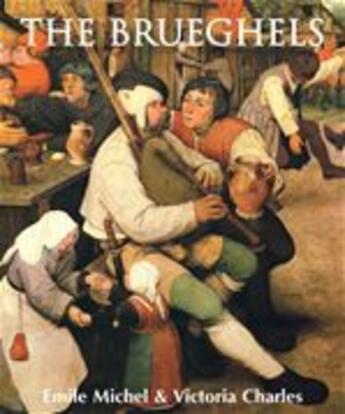Merci à toutes et à tous pour cette aventure collective
Passionné(e) de lecture ? Inscrivez-vous
gratuitement ou connectez-vous pour rejoindre la
communauté et bénéficier de toutes les fonctionnalités du site !

Pieter I Bruegel the Elder was born around 1525, probably near Breda, and died in 1569 in Brussels. In Antwerp, he studied as an apprentice under Pieter Coeck, and later visited Italy to understand the reason for the growing influence of the Italian masters, but his style remained rather different from theirs. Fascinated by people, this "painter of peasants" did not hesitate to paint scenes from the life of common people, as well as Biblical themes, the humour and restlessness of which strongly invoke Hieronymus Bosch. The contrast between the fineness of his canvases and the apparent simplicity of his subjects, characteristic of the great works of realism, testifies to the careful observation and great precision with which he created his pictures. He is credited with making a major contribution to the evolution of Dutch landscape painting. Pieter the Younger, his older son, was fascinated with the grotesque and the ugly, for which he was nicknamed "Hell Brueghel." He was the best copier of his father´s works and made his career in Antwerp. He kept the letter "h" in his last name, as did other members of the family, in order to distinguish himself from Pieter the Elder. Jan I, the younger son, also visited Italy before settling in Antwerp. Having worked with Rubens and created works different from those of his father, since he concentrated on colour and lustre, becoming a master of still life. The delicacy of execution and the infinite care with which he painted his flowers earned him the nickname of "Velvet Brueghel." This work covers a century of Flemish painting through the history of one family, emblematic of art history as a whole. With the help of more than two hundred reproductions of the three masters and their contemporaries, the author provides an exhaustive overview of this family´s contribution to the evolution of the history of painting and to the marvel of the Flemish artistic tradition.
Il n'y a pas encore de discussion sur ce livre
Soyez le premier à en lancer une !

Merci à toutes et à tous pour cette aventure collective

Lara entame un stage en psychiatrie d’addictologie, en vue d’ouvrir ensuite une structure d’accueil pour jeunes en situation d’addiction au numérique...

Un douloureux passage à l'âge adulte, entre sensibilité et horreur...

Blanche vient de perdre son mari, Pierre, son autre elle-même. Un jour, elle rencontre Jules, un vieil homme amoureux des fleurs...